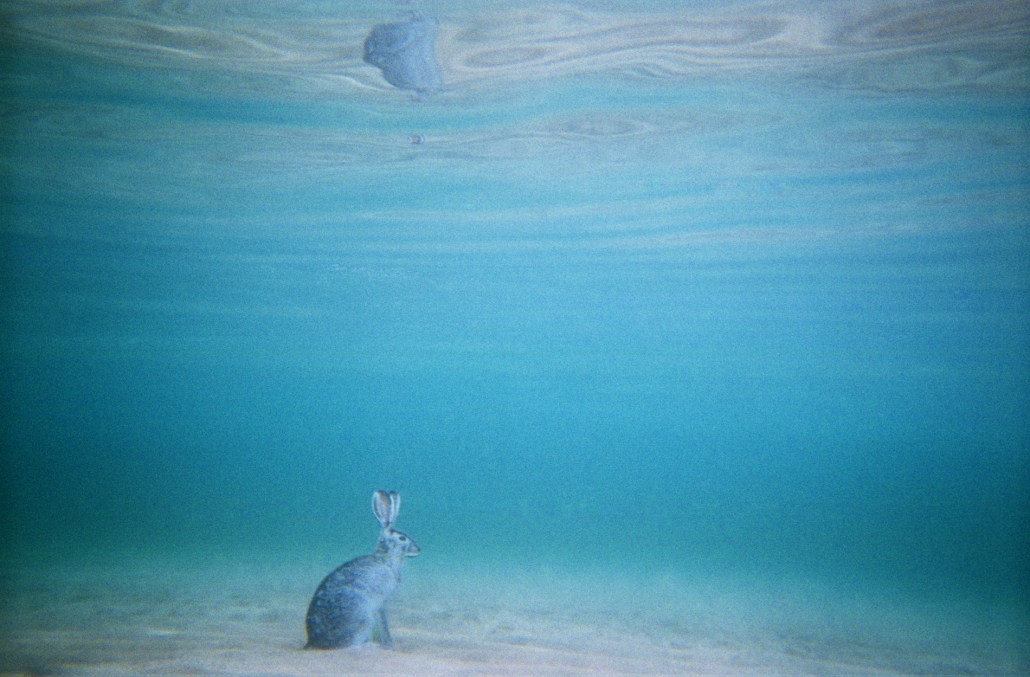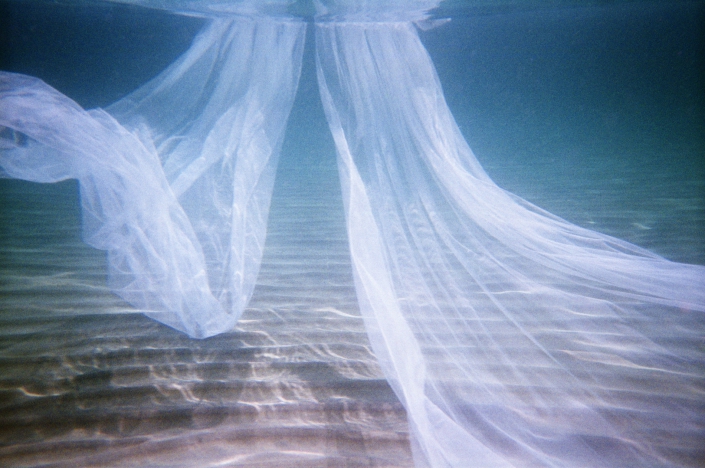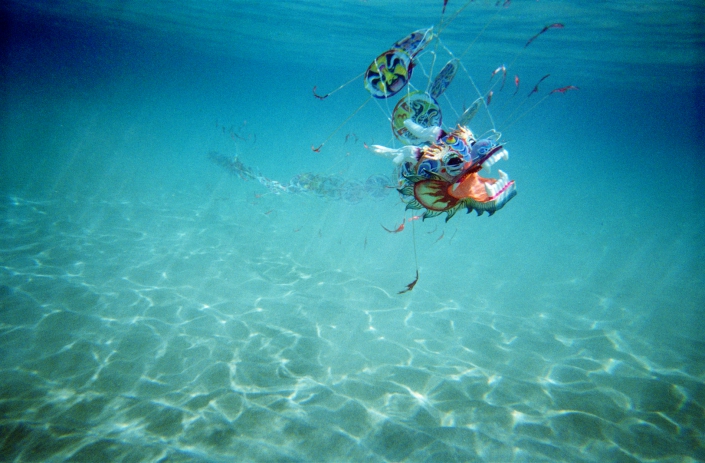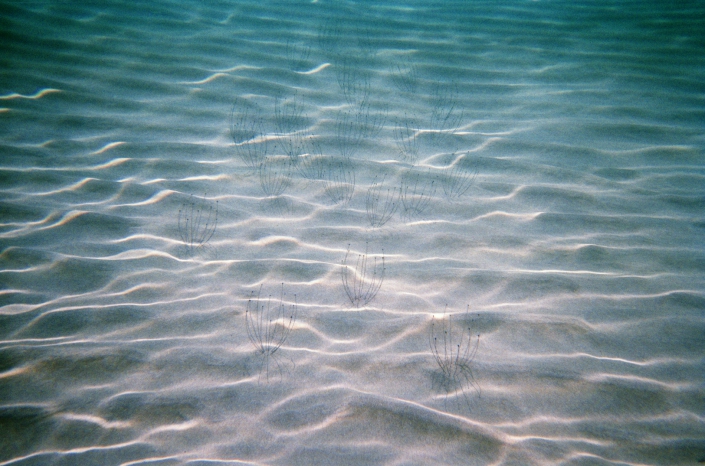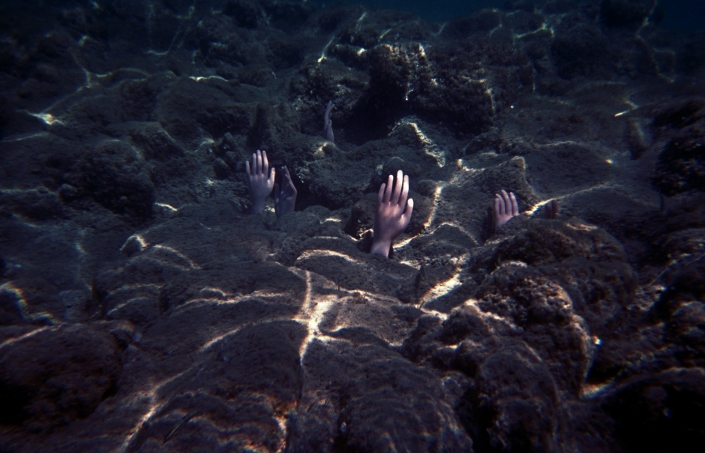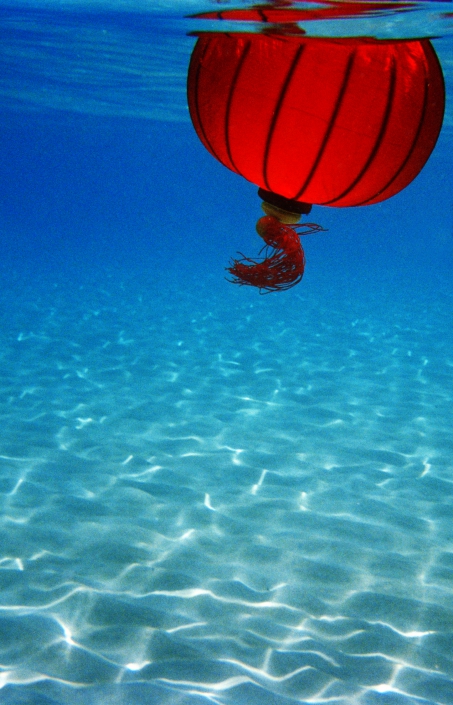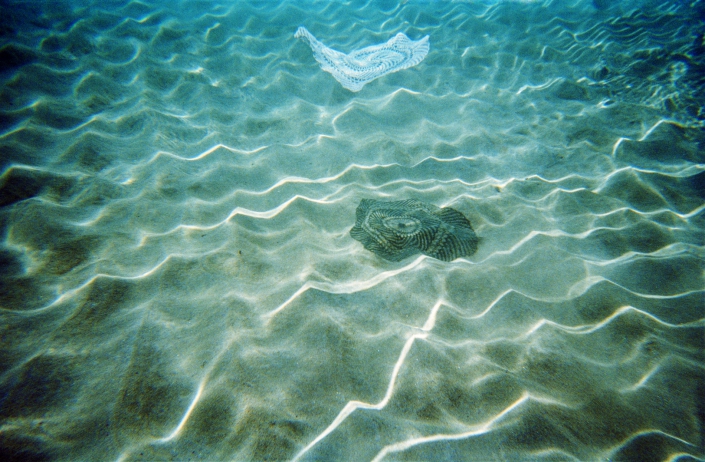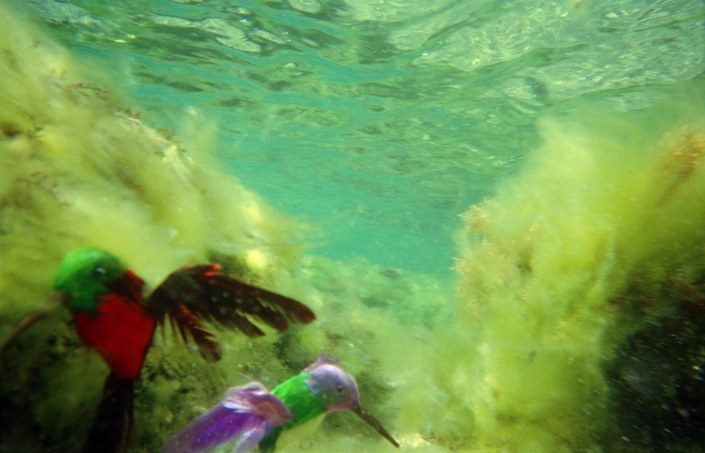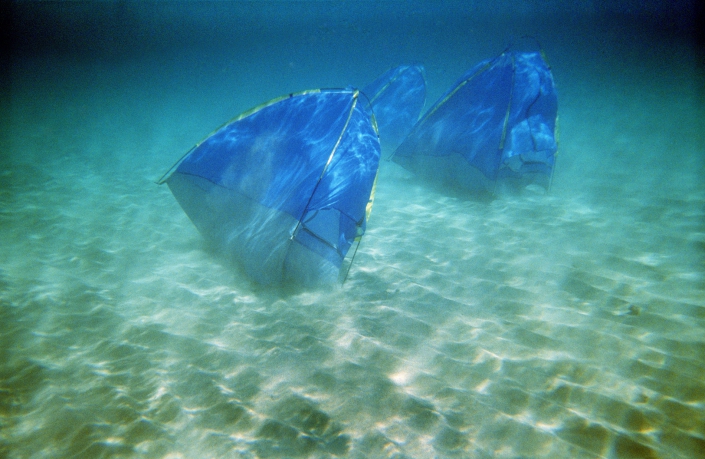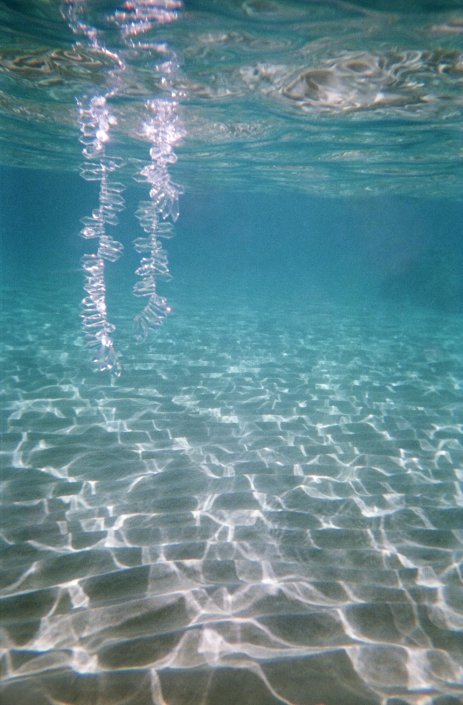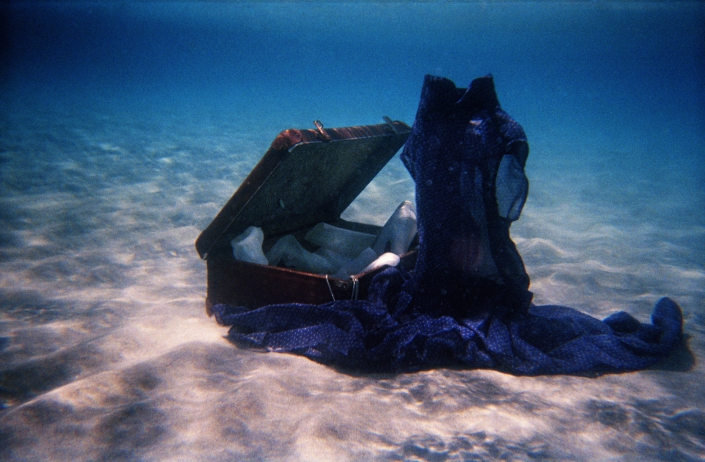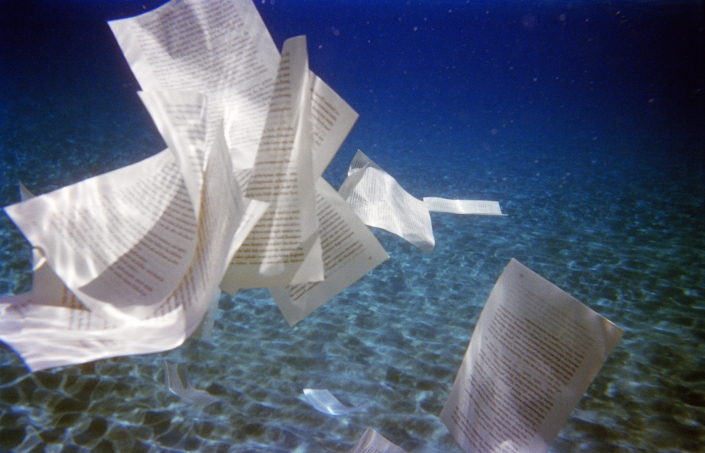ESTHER MLENEK | Submerged Land
Here, two weary tents stem against the storm, a far-travelled suit- case lies apathetically on the ground, behind it a dress of sorrow in a state of shock, over there an opulently draped pearl necklace, which steals itself quickly away and out of the scenery. The drowned objects seem beleaguered, disorient, isolated. Marko Zink refers in his under water series to the crisis-laden experiences of societies in transformation, sometimes by using a delicate sensitive- ness, sometimes by an again very striking symbolism. It is a transformation, which unsettles us, as nothing is reliable anymore, because not continuity but its cracks catch our eyes. He assembles individual images to a big narrative, which always wants to be seen as highly topical and, therefore, political. It is a point of view, which he shares with many other professional photographers, but he does not chase after dramatic shots and stereotypes.
With burka (2010), Zink positioned himself already apart that yet widespread “refugee porn”. He leads the gaze away from individuals’ fates to a universal narration. Although the majority of his work resembles an ethnographical staging, he acquires an element of wistful poetry in a threatening tale. The consonance of melancholy and poetry is not only achieved through colourful artefacts, floating around lonely, either carefully arranged in the sand or instead haphazardly tossed into the water, but also through Marko Zink’s underwater scenery and his photographic method. Water, the element of longing and angst, the calm sea surface, the stormy sea, a mystical surface for our own projections, an impregnable force of nature. Diving into it is always accompanied by an archaic picture of drowning, but also of rebirth. Image sections and purposely used blurriness, guide the gaze into a world, which is Atlantis, No- where Land and interspace at the same time. By doing so this world opens itself up to different imaginations.
MARIA MAGDALENA PRESSEL | Strange
In „FREMD“ (STRANGE) Marko Zink approaches the topic of Underwater Photography in a different kind and manner. Zink picks up on the topic of his series „SCHWIMMER“ (SWIMMER), in which he depicts the impermanence of all existing things. But this time the subject of „Alienation and Transformation of Anthropogenic Objects“, experiences a more distinguished and deeper significance as well as reinterpretation.
The artist abducts us into an underwater world and drags us deep down into the unknown. Fishnets become a theater’s curtain, which rises for us, similar to the first act of a play. The sea floor reveals itself as a stage. As the photographer’s ambition to catch a moment, memories and moments get caught in the fishnet itself. It is clearly not a coincidence that the viewer comes across a white rabbit in the depths of the ocean.
We follow it down, like Alice in „Alice’s Adventures in Wonderland“, through the wormhole into a paradox dreamworld. Within this universe, the rabbit as well as the beholder can move apparently easely through the waves. This alienation is persuaed by Zink with the „entrance“ of a Chinese luckdragon. The mythical creature of numerous legends, experiences a double reinterpretation, as the title of the photograph „Riemenfisch“ („oarfish“) shows. This deepsea fish, which reaches lengths of 11 meters lenght, seems to be origin to many old tales.The harmless beauty is reinterpreted for its first time. The non-dangerous fish becomes a mighty mythical creature through mankind’s tales and stories. Zink brings us from this interpretations back tot he harmless – it becomes a papery, colourful luckdragon. The anthropogenic objects are awakened to their own, new life in „FREMD“.
While in „SCHWIMMER“ and the series „BURKA“ („BURQA“) objects and clothes are barely recognisable in their original functions. The original items and their human functionality are always visible to the eye of the beholder. Their new life form under water becomes ist own paradoxon, which rips apart elements of human civilasition out of their context. Through the exposure to the elements they experience a new function.
With the absence of humans, massage devices and mannequin hands become plants which seem to reach for the surface and sway in the water flow. The artist lets the viewer dive into a world wich is both; eerie and beautiful at the same time. In another photography, tents glide swarm-like over the sandy ground. Swept away from the tides, Zink guides us back again to the topic of impermanence, the glimps oft he moment, which will have dissipated in the next second. The content of a suitcase, which opens like Pandora’s box, is torn apart into the expanse of the sea, like the pages of the book „Odyssey“ (ἡ Ὀδύσσεια). Human history is dissolved, gets rearranged by the environment in a novel manner and carried out ino the vastness oft he world. Yet, at the same time it opens up a new chapter.

